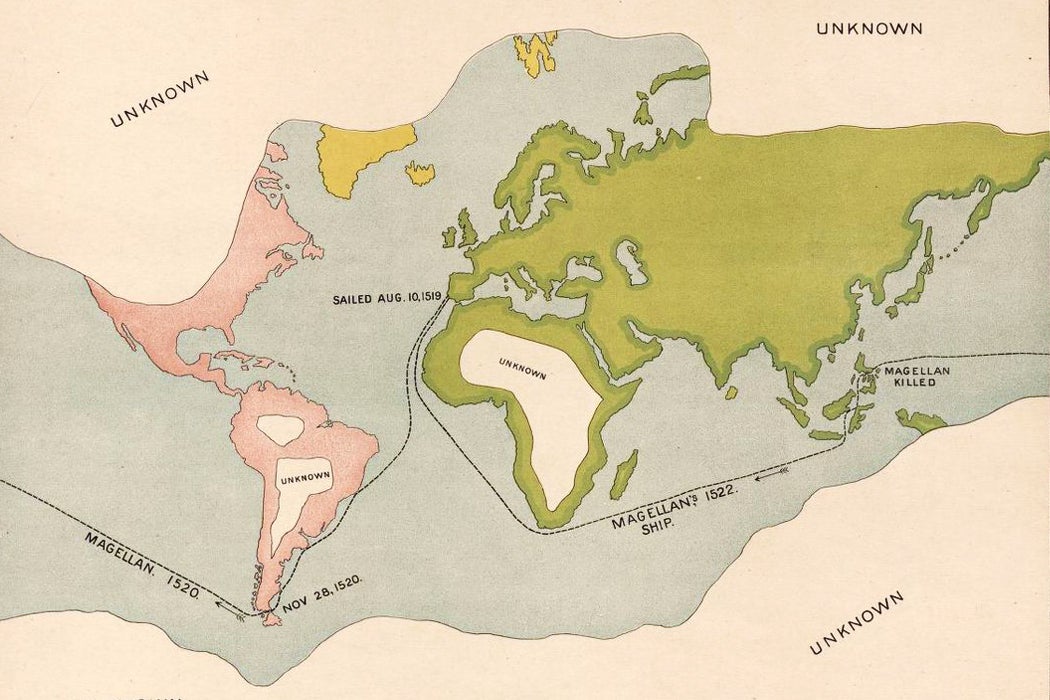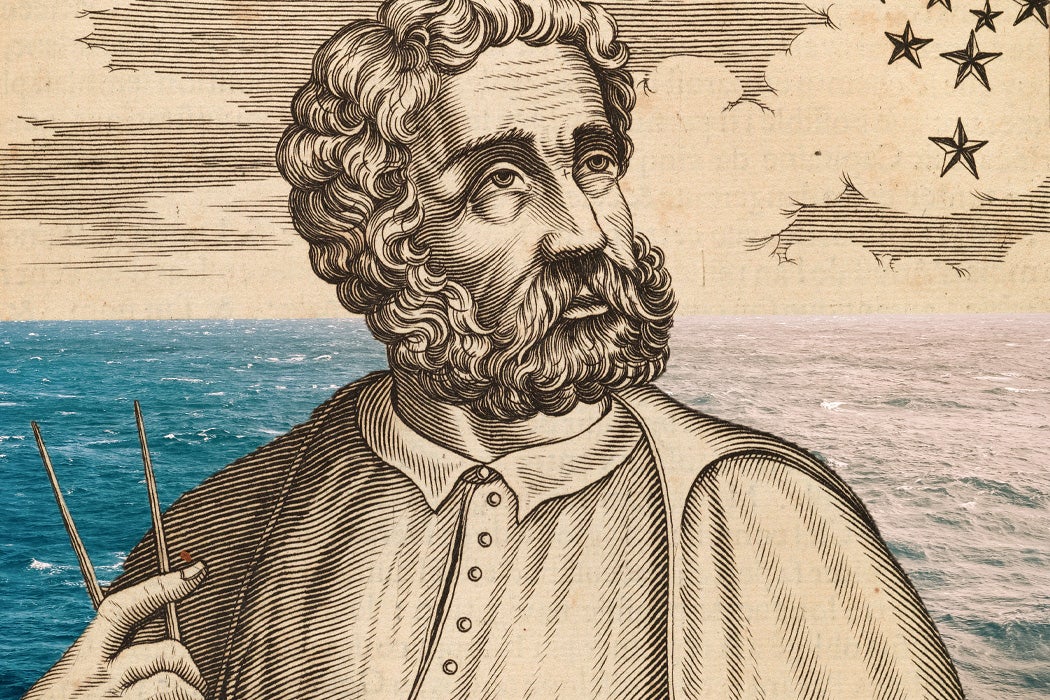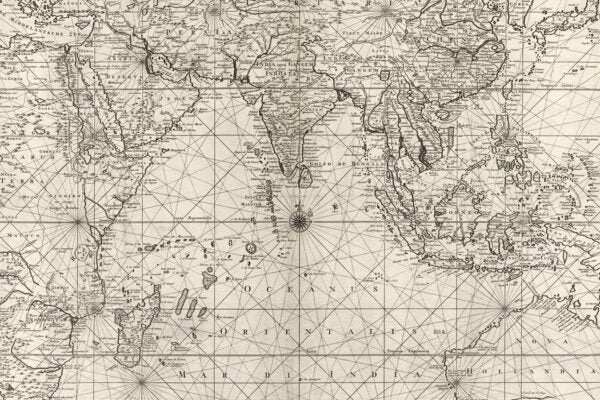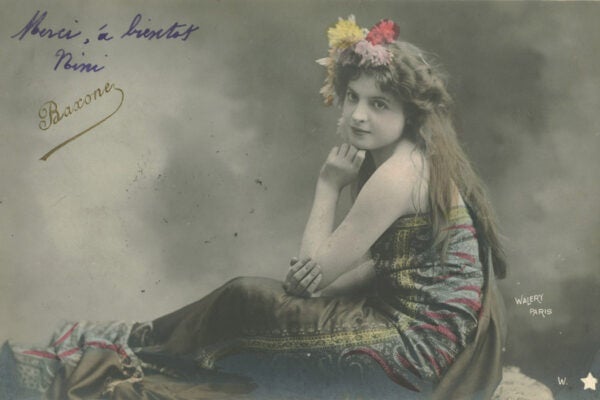From the start, it was hard to know whose side Ferdinand Magellan was on. Born in northern Portugal around 1480, Magellan, an orphaned son of lesser nobles, spent decades serving the Portuguese crown in its wars abroad, in India and Malaysia. One might think Magellan was the epitome of national devotion. But in 1518, after being rejected by the Portuguese authorities, Magellan turned to his country’s greatest rival: Spain. The Spanish court leapt at the opportunity to back Magellan’s ambitious venture—a voyage to find a westward trade route to the lucrative Spice Islands. For the Portuguese, a countryman aligning himself with public enemy number one was tantamount to treason.
The turn of the 16th century was an unsettled time. Sailors like Christopher Columbus were opening up vast new swathes of land that Europeans viewed as ripe for exploitation. To the west lay the Americas and the Caribbean islands, rich with natural resources (nevermind that they’d been inhabited for millennia). To the east, beyond India, were the Spice Islands, an archipelago in Indonesia called the Moluccas. It was here that traders found nutmeg, cloves, and mace.
Weekly Newsletter
The demand for spices was so high that whichever nation controlled access to the islands was sure to become fabulously wealthy. As the cook and author Clifford Wright stated in Gastronomica:
One could argue that the money made from spices contributed to the rise of the European city-state, perhaps played a role in the transition from feudalism to capitalism, fueled the impetus that opened an age of discovery, and contributed to the later emergence of the Renaissance.
To keep Spain and Portugal from literally warring over the lucrative territories, Pope Alexander created the Treaty of Tordesillas in 1494, awarding the eastern hemisphere of the globe to Portugal and the western hemisphere to Spain. But even this attempt only served to “touch off a furious race between the nations to claim new lands and to control the world’s trade routes even as they attempted to shift the line of demarcation to favor one side or the other,” as the historians Scott Fitzpatrick and Richard Callaghan wrote in the Journal of Pacific History.
Magellan waded directly into these contentious waters, suggesting to the Spanish court that the Moluccas might actually fall within the Spanish side of the treaty. He just needed to navigate a westward route to them, across the Atlantic and around the unexplored tip of South America. If he happened to discover other islands along the way, so much the better for Spain—and for Magellan’s own coffers.

But proving the Portugese-born Magellan had Spain’s best interests at heart proved a challenge from day one. The Spanish court awarded him a five-ship armada and around 280 crew members for the mission. The majority of the crew members were Spanish, including three of the five captains. Many among them mistrusted Magellan’s intentions.
“The masters and captains of the other ships of his company did not love him,” wrote Italian sailor Antony Pigafetta, the voyage chronicler. “Of this I do not know the reason, except by cause of his, the captain-general, being Portuguese, and they were Spaniards or Castilians, who for a long time have been in rivalry and ill will with one another.”
The fleet set sail for the Canary Islands, an early restocking area, on September 20, 1519. Before the ships had even crossed the equator or sighted Brazil, word came to Magellan that the capitan of the San Antonio, a Spaniard named Juan de Cartagena, was collaborating with two other Spanish captains to start a mutiny. But the attempt was short-lived, and Magellan quickly had Cartagena arrested and removed from command.
On December 13, the armada landed at Rio de Janeiro, just in time for the beginning of summer in the southern hemisphere. The ships made their way down the eastern coast of South America, sometimes catching and eating sharks, noting the abundance of “sea wolves” (sea lions). Despite their fearlessness around the sharks, in steering their course, the sailors gave the sea lions wide berth as “man-eaters” and waited out storms. When the group reached the Bay of San Julian (in present-day Patagonia) on March 31, Magellan decided to spend the winter there, reduce rations, and prepare for the final stretch around South America.
The crew was already around 860 miles farther south than the Cape of Good Hope, in Africa. Rumors began spreading that Magellan was going to lead all the Spanish sailors to their deaths for the glory of Portugal, or that he was hoping to be away long enough that the Spanish court would forget about the venture. Once again, mutiny began brewing.
On April 1, 1520, Magellan held an Easter mass for all crewmembers. But the three Spanish captains neglected to attend; they were already planning a way to overthrow Magellan and sail back to Spain. When Magellan learned of the plan, he realized that only two ships of the five were loyal to him: the Santiago and the Trinidad. Since all five ships were currently anchored in a bay with one narrow exit to the sea, Magellan deployed a cunning strategy to keep the mutineers from escaping. He sent a ship with his loyal followers to negotiate with the Spanish captain Luis de Mendoza, who held control of the Victoria. But instead of opening a discussion, Magellan’s men immediately killed Mendoza. The sudden violence was enough for the crew members to vow their allegiance to Magellan once more.
From there, Magellan sent the Trinidad to the bay’s exit and waited for the one of the other mutineer’s ships to approach. Men loyal to Magellan boarded the mutinous ship and quickly arrested dozens. Although 40 crew members were found guilty and sentenced to death, Magellan pardoned all of them and only put some in chains for several weeks. To do differently would have left him without enough men to complete the voyage. As for the leaders of the mutiny, Magellan had several of them marooned (left alone on an island)—which was as good as a death sentence in their current location.
Even after this incident, the trials facing Magellan’s crew were far from over. In October, the group finally returned to their mission to look for an inlet that would allow them passage around the tip of South America. “Any possible foreknowledge Magellan may have had of this passage was inexact at best,” write the management professors Patrick J. Murphy and Ray W. Coye in Mutiny and Its Bounty: Lessons from the Age of Discovery. “In those days, cosmologists and diviners were very active in cartography. Maps were badly drawn because the true magnitude of the earth’s size was unknown, and methods of determining longitude had not yet been ascertained.”
On October 21, the armada entered a strait, but in the weeks that followed the men became restive once more. Some felt they’d achieved their goal in simply finding the strait, and argued the armada should return to Spain. In fact, the San Antonio, still captained by a Spaniard, went off to explore a channel and abandoned the mission. They returned to Seville on May 6, 1521.
As for the rest of the men, they reached the South Pacific on November 28, 1520. Magellan, believing the journey to the Moluccas would take no more than a few days, christened the great body of water the Mare Pacifico—“calm sea.” Little did he know that the Pacific was the world’s largest ocean, comprising a full third of the whole globe.
Instead of quickly arriving at their destination, Magellan and his men would spend the next three months sailing in search of land. As time wore on, food provisions were emptied and men began to suffer from exhaustion and scurvy. Pigafetta wrote:
We ate only old biscuit turned to powder, all full of worms and stinking of the urine which the rats had made on it, having eaten the good. And we drank water impure and yellow. We ate also ox hides which were very hard because of the sun, rain, and wind. And we left them four or five days in the sea, then laid them for a short time on embers, and so we ate them. And of the rats, which were sold for half an écu apiece, some of us could not get enough.
Thirty men died of scurvy alone; dozens of others starved to death. Although Magellan experienced remarkably good weather, they didn’t reach the inhabited Marianas Islands until March 6, 1521, and then made landfall on the island of Cebu in the Philippines on April 7. Though they weren’t on the Moluccas, it seemed at long last the crew might have achieved their mission. But instead, Magellan was killed during a battle with one of the indigenous groups on Mactan Island, who resisted being converted to Christianity. Of the remaining ships, only the Victoria made it all the way back to Spain, on September 6, 1522, with a mere 18 crew members.
In the aftermath of the calamitous voyage, Magellan’s reputation was quickly sullied by surviving Spanish sailors. Though he had succeeded doing something that no one else had ever done—the combined journeys he made to both the east and the west over his lifetime amounted to a full circumnavigation—he was decried for his treatment of the crew. “This first circumnavigation of the globe epitomized the contention between Portugal and Spain for the dominion of the East Indies, and the difficulty of determining where lands such as the Moluccas lay in relation to the ideal Line of Demarcation established by the Treaty of Tordesillas of 1494,” wrote the historian David Boruchoff in Renaissance Quarterly.
The restoration of Magellan’s legacy came largely from the sailor Pigafetta, who survived the voyage and gave his notes directly to the Spanish King Charles. Pigafetta then traveled throughout Europe to publish and promote the work. But even in the most favorable light, Magellan’s voyage remained contentious. Spurned by the Portuguese, he had turned by the Spanish, but was never truly accepted as one of them. Magellan, in short, never had a chance to tell his own story. That work was left to his crew and to historians, all with their own views, as they attempted to understand why one man would push so hard at such an impossible task.







